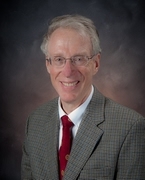Keynote Speech I
Biomedical Text
Mining for Semantic Search and Knowledge
Discovery
Professor Sophia
Ananiadou
School of Computer
Science
Director, National Centre for Text
Mining
Manchester Interdisciplinary
Biocentre
Due to
increasing specialisation, silo effects and literature deluge,
researchers are struggling to draw out general truths and to
generate hypotheses to test. This is especially true when
considering the needs of biomedicine. Natural language processing
techniques are urgently needed, including aids to link the
scientific literature with appropriate knowledge in scientific
databases, and to provide textual evidence in hypothesis
generation and semantic search. The evidence to generate
hypotheses for comprehensive diagnostics, pharmacological
interventions, treatments, etc., is hidden in text. In addition,
the type of evidence needed is complex, requiring techniques
beyond statistical keyword search mechanisms, such as question
answering about facts, relations and events of biomedical
relevance. The extraction of semantic metadata from text allows
advanced semantic search. In my talk, I will discuss such issues
and also present some of the biomedical text mining services
developed at the UK National Centre for Text Mining addressing the
needs of the biomedical community for semantic search and
knowledge discovery.
Biography:
Professor Sophia Ananiadou is Director of the UK National
Centre for Text Mining (NaCTeM), and full Professor of Computer
Science in the School of Computer Science, University of
Manchester, UK. She is the main designer of the text-mining tools
and services currently used in NaCTeM, i.e. terminology
management, information extraction, intelligent searching, and
association mining. Her research projects include text
mining-based visualisation of biochemical networks, data
integration using text mining (on infectious diseases, for the
PathoSystems Resource Integration Center), building biolexica and
bio-ontologies, and automatic event extraction of bioprocesses.
She also leads work to support scientists in evidence finding via
text mining based search, within the UK PubMed Central project,
and collaborates with centres in the US and Japan to develop text
mining infrastructures for the community.
She has been awarded the Daiwa Adrian prize (2004) and the
IBM UIMA innovation award (2006, 2007,2008) for her work on
interoperability of text-mining tools in biomedicine. She has over
160 publications in journals, conferences and
books.
Keynote Speech II
Brain-Computer
Interfaces: Progress, Problems, and Possibilities
Chief, Laboratory of Neural Injury and
Repair
New York State Department of Health and
State University of New
York
Brain-computer interfaces (BCIs)
have a promising future, with researchers in laboratories all over
the world using many different brain signals, recording methods,
and signal processing approaches to realize increasingly capable
systems. These BCI systems can control a variety of external
devices, from cursors and avatars on computer screens, to
televisions and wheelchairs, to robotic arms and neuroprostheses.
People with and without disabilities have tested these systems,
and a few people who are severely disabled are already using them
for important purposes in their daily lives. Furthermore, several
groups are beginning to explore BCI-based methods for improving
rehabilitation for people with strokes and other neuromuscular
disorders. Thus, BCIs are poised to become a major new technology
for people with disabilities, and possibly for the general
population as well. At the same time, the realization of this
bright future depends on advances in four critical areas. First,
both non-invasive and invasive BCIs need better signal-acquisition
hardware. Second, the real-life usefulness of BCI systems for
people with disabilities requires convincing clinical validation.
Third, effective strategies for BCI dissemination and ongoing
support must be developed. Fourth, and perhaps most important, if
non-invasive or invasive BCIs are to be widely used for anything
more than the most basic communication functions, their
reliability must be greatly improved. Better reliability may be
achieved with BCI design strategies that are based on the
principles underlying the excellent reliability of natural
neuromuscular actions. These strategies include: effective
engagement of brain adaptive capacities; task-appropriate
distribution of control between the brain and the BCI; and BCI use
of signals from multiple brain areas. Effective attention to these
critical areas by scientists and engineers throughout the world
can realize the exciting future envisioned for BCI
technology.
Biography:
Over the past 30 years, Dr. Wolpaw's laboratory has
developed and used operant conditioning of spinal reflexes as a
model for defining the plasticity underlying learning. His work
has demonstrated operant conditioning of spinal reflexes, has
showed that this conditioning changes the spinal cord
physiologically and anatomically, and has begun to reveal the
underlying mechanisms. His group’s recent work shows that reflex
conditioning can guide spinal cord plasticity in spinal
cord-injured rats and can thereby improve locomotion. Clinical
researchers are now finding evidence that such conditioning can
improve locomotion in people with partial spinal cord injuries.
For the past 20 years, Dr. Wolpaw has also led development of
EEG-based brain-computer interface (BCI) technology to provide
non-muscular communication and control to people who are
paralyzed. This work has shown that noninvasive EEG-based BCI
technology can give movement control similar to that achieved by
electrodes placed in the brain. Most recently, his group has begun
to provide BCI systems to severely disabled people for daily use
in their homes. This work is demonstrating that a BCI can restore
communication ability to people for whom conventional assistive
communication devices are inadequate. Dr. Wolpaw and his research
group have been funded for many years by NIH, other Federal
agencies, and a variety of private foundations, and have received
numerous national and international awards.
|



